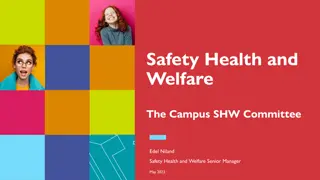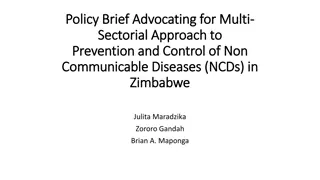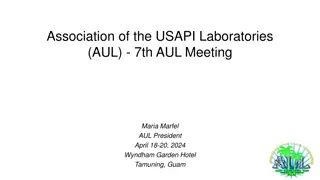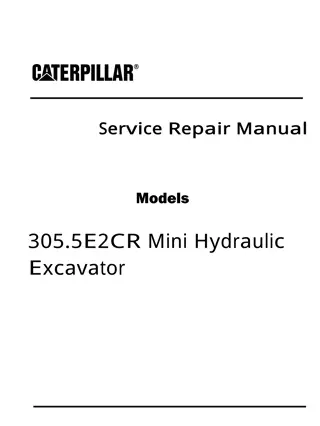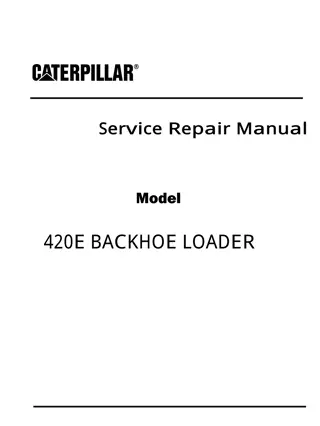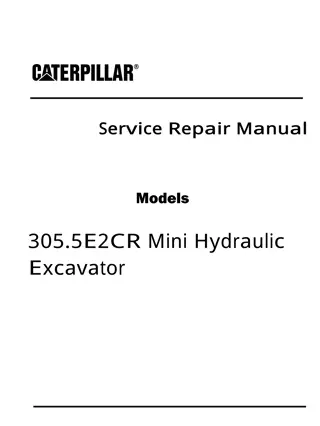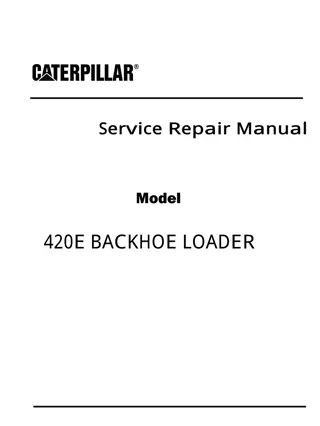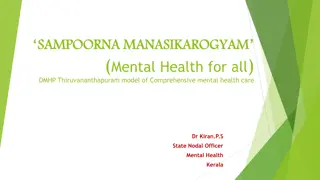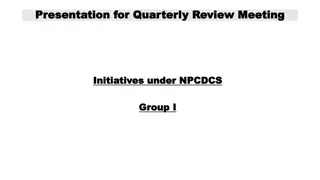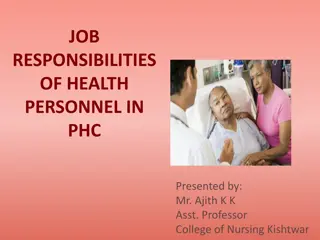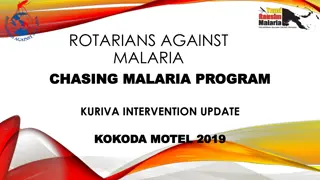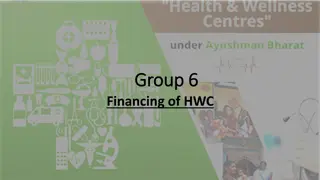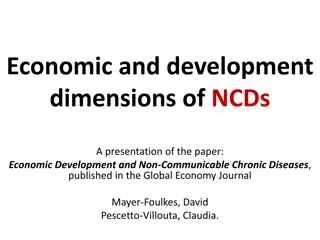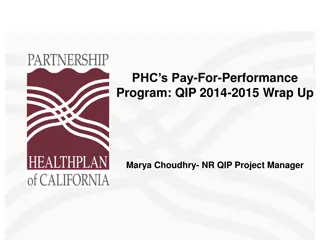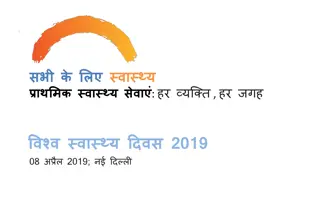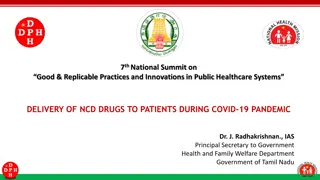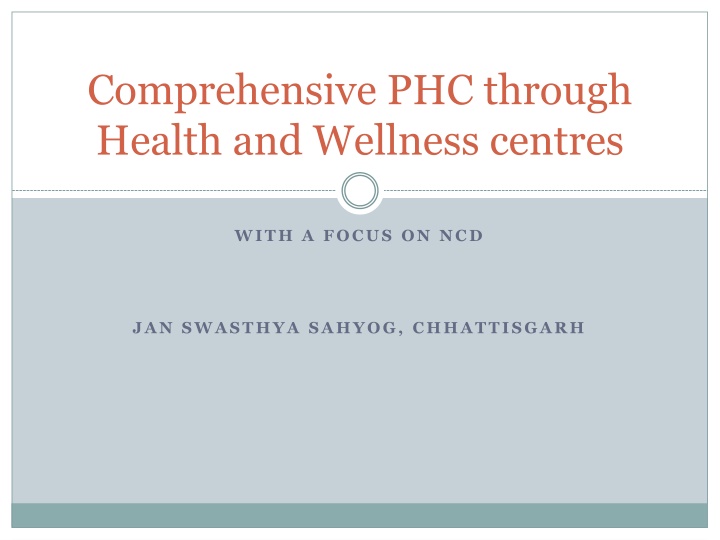
Primary Health Care Transformation in Chhattisgarh
"Explore a comprehensive primary health care initiative in Chhattisgarh, focusing on Non-Communicable Diseases (NCDs) through Health and Wellness Centers. Learn about community management models, intervention structures, sub-centers, roles of Health and Wellness Centers, and the importance of information technology in healthcare. Discover how this innovative approach is changing the landscape of healthcare delivery in rural Bilaspur, CG."
Download Presentation

Please find below an Image/Link to download the presentation.
The content on the website is provided AS IS for your information and personal use only. It may not be sold, licensed, or shared on other websites without obtaining consent from the author. If you encounter any issues during the download, it is possible that the publisher has removed the file from their server.
You are allowed to download the files provided on this website for personal or commercial use, subject to the condition that they are used lawfully. All files are the property of their respective owners.
The content on the website is provided AS IS for your information and personal use only. It may not be sold, licensed, or shared on other websites without obtaining consent from the author.
E N D
Presentation Transcript
Comprehensive PHC through Health and Wellness centres WITH A FOCUS ON NCD JAN SWASTHYA SAHYOG, CHHATTISGARH
The Problem While the infections and MCH can be managed through institutions and communitised somewhat, the NCDs need a model of community management The compliance rates with treatment in most NCDs are below 50% The present HR focus in our health system is on a doctor and an ASHA, and some minor focus on the ANM Mid level HW is the need IT has been often thought of as a game changer in health systems that can provide STP and also allow monitoring
The structure of our intervention (Rural Bilaspur, CG) Comprehensive primary health care and not selective health care, responsiveness to the people s needs. Immunization provided by the public system, Screening camps for NCDs and for common cancers HR Asha, Senior health workers and ANMs, cluster / RCH/Asha coordinator, Doctor/pharmacist/lab tech/ records person team
The Sub centre. Health and wellness centres Phone, and refrigerator, net book and paper records Senior health workers: community health skills, clinical skills and lab skills, and ANMs Training and educational centre and a centre for the health workers
HWC functions Run as a first contact site for difficult problems Animal bite care, deliveries, step down nursery Chronic ongoing care for NCDs Screening of cancers and NCDs Disease based peer support groups Common emergencies Training site for various cadres Other care: Guided by Unmet Need maternal care, contraception, care of emergency care, epidemic responsiveness, end of life care
Role of information technology There are guidelines, not like STP- to support, but has little role in financing and monitoring Training support and organization of work elements are what one hears. It helps , but it is not the game changer
Use of Information technology We use IT for enabling primary providers and . not to monitor them Interactive voice recording system to exploit audio literacy , and developing a people based EMR
Interactive voice recording technology Data collection Surveillance Mobile health Training
Laboratory Support in primary care VHW and SHW do many tests on their own The Lab supports every week ( 30% of people undergo lab tests) Referral of samples goes through an elaborate mechanism of runners , and reports reach via cell phones and EMR
STG/individualised care Individual plans are guided by STG but determined by physicians for each person with a Chronic illness, And followed by SHW or Asha- Ensuring Continuity of Care STGs don t lend themselves into automated plans
Disease based patient groups 30 such Illnesses such as alcohol dependence, Diabetes, Hypertension, mental illnesses, epilepsy, sickle cell disease, ABCD, rheumatoid arthritis, Asthma and other lung disorders Meet once a month, share their news, support compliance issues, discuss and learn about a new thing, play and do some physical activity, micro-finance,and some take up some livelihood; have some food together; also find other people with the same illness in the community. Patient advocacy with the system and with providers
The Human resources Mitanins at about 200- 250 people Senior health worker and the ANM at about 3000-4000 ( trained by us 9 months) B Science community Health, or an augmented ANM or LHV weekly doctor Referral centre runs like a CHC local recruitment and local training and deployment- largely from within the community
Roles of Health workers The Senior or middle level Health worker : and ANM/ Male MPW, Looks after chronic illnesses and acute severe illnesses MCH: Auxiliary Nurse Midwife Asha: acute moderate illnesses and help run patient groups
Human Resources: whither doctors? Not over dependent on a doctor, but not without a doctor Sub centre supported by a team of a doctor, a lab tech , a pharmacist and a record keeper on a fixed periodic day Can t trivialise primary care; plus legality ensured
Supportive Supervision Both Administrative and Clinical, and through on job training Coordinator for RCH: Antenatal clinics, postpartum care, newborns and under 3 kids, and cancer screening for Breast and Cervical cancer Cluster coordinator: NCD care along with the SHW Asha/referral centre coordinator: supporting village based care/ malaria Monthly meeting is the strategic pathway
Cost of running this programme The per capita cost of providing Comprehensive Primary Health Care Rupees 554 per person per year; 3.2 visits per capita per year Of which 16% is secondary or tertiary care, and 84% is primary care ( Village/ hamlets 51% care, Health and wellness centres 33% care) and Referral centre 16%) performance based financing or financial incentives of any kind. But reliable and timely payments of the modest sums agreed
Lessons learnt It is possible to provide providing good quality of care at affordable costs using a level of human resource which is more or less consistent with what is envisaged in draft national health policy and in the Indian Public Health Standards and the existing financing packages and strategies The game changer is really the organization of service delivery ( to make it comprehensive) and the quality of training and support provided, and not IT or STP


